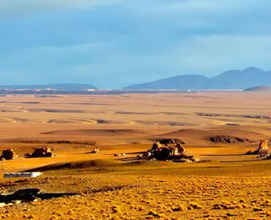Turning up the Heat: High-Flux Magmatism in the Central Andes
The Neogene history of the Central Andes records one of Earth’s most productive periods of high-flux silicic magmatism. Subduction of an aseismic ridge, the Juan Fernández Ridge (JFR), led to changes in mantle melt productivity that initiated a transcrustal magmatic system culminating in massive caldera- and ignimbrite-forming eruptions. This volcanism is time transgressive, tracking the southward passage of the JFR beneath the Central Andes. The volcanic field is underlain by a composite, arc-long mid- and upper-crustal granodiorite batholith that represents extensive processing of the continental crust by mantle-derived magmas. This batholith stabilized the upper crust and contributed to the extreme elevations despite a net crustal loss beneath the Puna region.
Turning up the Heat: High-Flux Magmatism in the Central Andes Read More »


